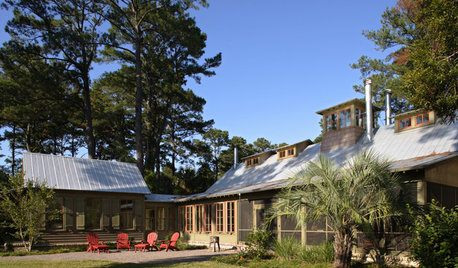Law of Unintended Consequences
runktrun
13 years ago
Related Stories

REMODELING GUIDESDesign Workshop: Is an In-Law Unit Right for Your Property?
ADUs can alleviate suburban sprawl, add rental income for homeowners, create affordable housing and much more
Full Story
DECORATING GUIDESCalifornia Law: License to Practice Interior Design?
A proposed bill that would require a license to practice interior design in California has Houzzers talking. Where do you stand?
Full Story
MOST POPULAR5 Remodels That Make Good Resale Value Sense — and 5 That Don’t
Find out which projects offer the best return on your investment dollars
Full Story
CONTRACTOR TIPSBuilding Permits: When a Permit Is Required and When It's Not
In this article, the first in a series exploring permit processes and requirements, learn why and when you might need one
Full Story
WORKING WITH PROSGo Beyond the Basics When Interviewing Architects
Before you invest all that money and time, make sure you and your architect are well matched beyond the obvious levels
Full Story
RUSTIC STYLEHouzz Tour: A Southern Vacation Home Trots Out Equestrian Style
Barn-recalling details give a home near horse stables a relaxed vibe that suits both the owners and the pastoral site
Full Story
HOME TECHThe Inevitable Future of Drones Around Your Home
As Google joins the push for airborne deliveries, it seems only a matter of time before neighborhoods are buzzing with drones. Is that OK?
Full Story
GARDENING AND LANDSCAPINGGrow a Lush Privacy Screen
No need to wait forever for patio privacy the green way. These 10 ideas will get your screening up and running in no time
Full Story
FUN HOUZZ10 Truly Irritating Things Your Partner Does in the Kitchen
Dirty dishes, food scraps in the sink — will the madness ever stop?
Full Story
ENTERTAININGModern Manners: Smooth Moves for Kids' Visits
For hosting kids or visiting with Junior in tow, we give you a plan to keep stress levels low and fun levels high
Full Story







carol6ma_7ari
claireplymouth z6b coastal MA
Related Professionals
Redondo Beach Landscape Architects & Landscape Designers · Clearlake Landscape Contractors · Columbine Landscape Contractors · Danvers Landscape Contractors · Farmington Landscape Contractors · Middletown Landscape Contractors · Santa Maria Landscape Contractors · Twin Falls Landscape Contractors · Ansonia Landscape Contractors · Bloomington Decks, Patios & Outdoor Enclosures · Braintree Decks, Patios & Outdoor Enclosures · Chicago Decks, Patios & Outdoor Enclosures · Montgomery County Decks, Patios & Outdoor Enclosures · Oswego Decks, Patios & Outdoor Enclosures · St. Louis Decks, Patios & Outdoor EnclosuresPenelope
nandina
ginny12
runktrunOriginal Author
littleonefb
ontheteam
gardenscout
ginny12
runktrunOriginal Author
ginny12
airplaneantonym
claireplymouth z6b coastal MA
dearyvette
scpearson